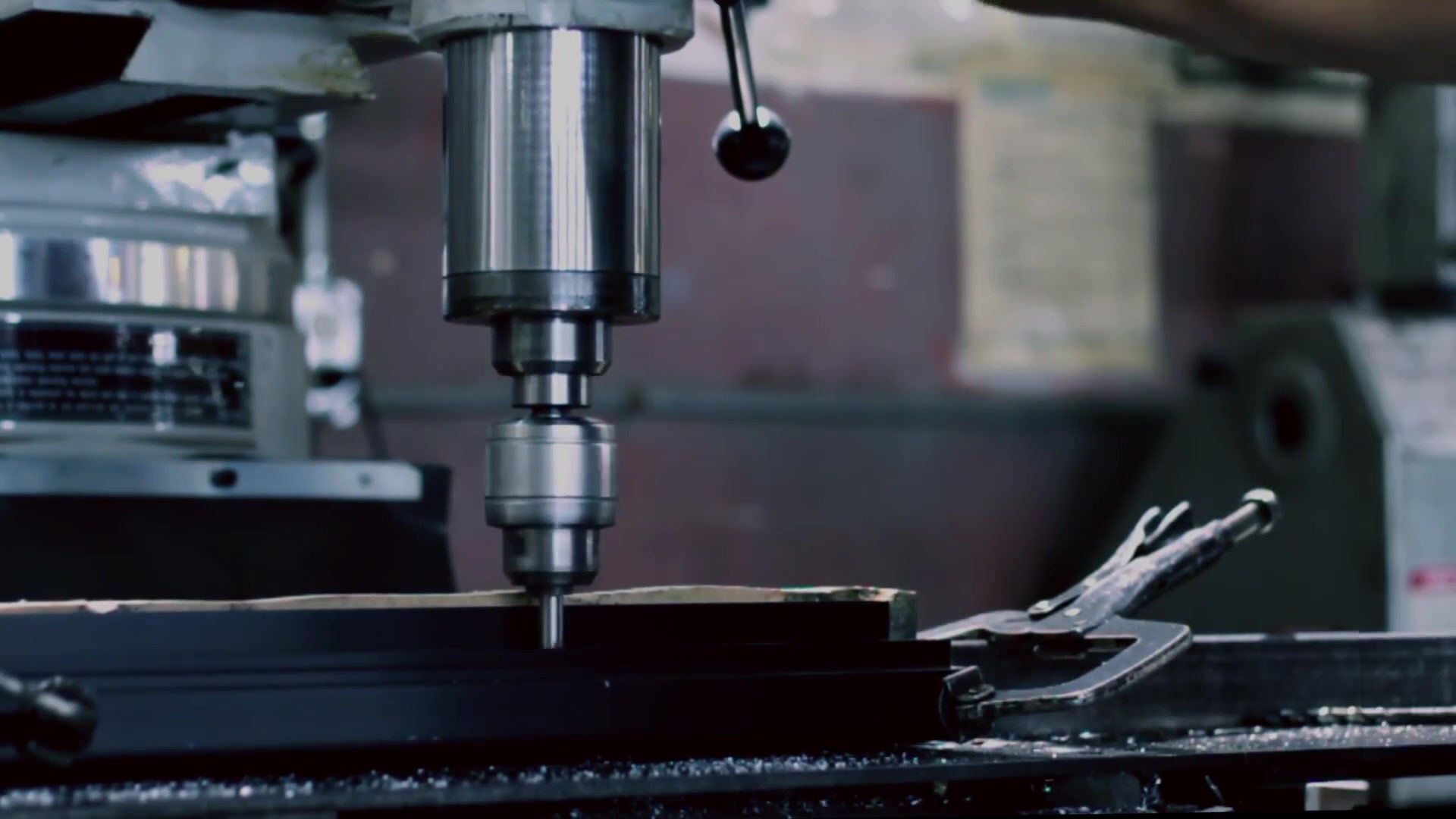


Global Custom Manufacturer, Integrator, Consolidator, Outsourcing Partner for a Wide Variety of Products & Services.
We are your one-stop source for manufacturing, fabrication, engineering, consolidation, integration, outsourcing of custom manufactured and off-shelf products & services. We also private label / white label your products with your brand name if you wish.
Choose your Language
-
Custom Manufacturing of Parts, Components, Assemblies, Finished Products, Machines and Industrial Equipment
-
Domestic & Global Contract Manufacturing
-
Manufacturing Outsourcing
-
Domestic, Global Procurement of Industrial Products
-
Private labeling / White Labeling your Products with your Brand Name
-
Product Finding & Locating Services
-
Global Design and Channel Partnership
-
Engineering Integration
-
Engineering Services
-
Global Consolidation, Warehousing, Logistics
Nanoscale Manufacturing / Nanomanufacturing
Our nanometer length scale parts and products are produced using NANOSCALE MANUFACTURING / NANOMANUFACTURING. This area is still in its infancy, but holds great promises for the future. Molecularly engineered devices, medicines, pigments…etc. are being developed and we are working with our partners to stay ahead of the competition. The following are some of the commercially available products we currently offer:
CARBON NANOTUBES
NANOPARTICLES
NANOPHASE CERAMICS
CARBON BLACK REINFORCEMENT for rubber and polymers
NANOCOMPOSITES in tennis balls, baseball bats, motorcycles and bikes
MAGNETIC NANOPARTICLES for data storage
NANOPARTICLE catalytic converters
Nanomaterials may be any one of the four types, namely metals, ceramics, polymers or composites. Generally, NANOSTRUCTURES are less than 100 nanometers.
In nanomanufacturing we take one of two approaches. As an example, in our top-down approach we take a silicon wafer, use lithography, wet and dry etching methods to construct tiny microprocessors, sensors, probes. On the other hand, in our bottom-up nanomanufacturing approach we use atoms and molecules to build tiny devices. Some of the physical and chemical characteristics exhibited by matter may experience extreme changes as particle size approaches atomic dimensions. Opaque materials in their macroscopic state may become transparent in their nanoscale. Materials that are chemically stable in macrostate may become combustible in their nanoscale and electrically insulating materials may become conductors. Currently the following are among the commercial products we are able to offer:
CARBON NANOTUBE (CNT) DEVICES / NANOTUBES: We can visualize carbon nanotubes as tubular forms of graphite from which nanoscale devices can be constructed. CVD, laser ablation of graphite, carbon-arc discharge can be used to produce carbon nanotube devices. Nanotubes are categorized as single-walled nanotubes (SWNTs) and multi-walled nanotubes (MWNTs) and can be doped with other elements. Carbon nanotubes (CNTs) are allotropes of carbon with a nanostructure that can have a length-to-diameter ratio greater than 10,000,000 and as high as 40,000,000 and even higher. These cylindrical carbon molecules have properties that make them potentially useful in applications in nanotechnology, electronics, optics, architecture and other fields of materials science. They exhibit extraordinary strength and unique electrical properties, and are efficient conductors of heat. Nanotubes and spherical buckyballs are members of the fullerene structural family. The cylindrical nanotube usually has at least one end capped with a hemisphere of the buckyball structure. The name nanotube is derived from its size, since the diameter of a nanotube is in the order of a few nanometers, with lengths of at least several millimeters. The nature of the bonding of a nanotube is described by orbital hybridization. The chemical bonding of nanotubes is composed entirely of sp2 bonds, similar to those of graphite. This bonding structure, is stronger than the sp3 bonds found in diamonds, and provides the molecules with their unique strength. Nanotubes naturally align themselves into ropes held together by Van der Waals forces. Under high pressure, nanotubes can merge together, trading some sp2 bonds for sp3 bonds, giving the possibility of producing strong, unlimited-length wires through high-pressure nanotube linking. The strength and flexibility of carbon nanotubes makes them of potential use in controlling other nanoscale structures. Single-walled nanotubes with tensile strengths between 50 and 200 GPa have been produced, and these values are approximately an order of magnitude greater than for carbon fibers. Elastic modulus values are on the order of 1 Tetrapascal (1000 GPa) with fracture strains between about 5% to 20%. The outstanding mechanical properties of the carbon nanotubes makes us use them in tough clothes and sports gear, combat jackets. Carbon nanotubes have strength comparable to diamond, and they are weaved into clothes to create stab-proof and bulletproof clothing. By cross-linking CNT molecules prior to incorporation in a polymer matrix we can form a super high strength composite material. This CNT composite could have a tensile strength on the order of 20 million psi (138 GPa), revolutionizing engineering design where low weight and high strength is required. Carbon nanotubes reveal also unusual current conduction mechanisms. Depending on the orientation of the hexagonal units in the graphene plane (i.e. tube walls) with the tube axis, the carbon nanotubes may behave either as metals or semiconductors. As conductors, carbon nanotubes have very high electrical current-carrying capability. Some nanotubes may be able to carry current densities over 1000 times that of silver or copper. Carbon nanotubes incorporated into polymers improve their static electricity discharge capability. This has applications in automobile and airplane fuel lines and production of hydrogen storage tanks for hydrogen-powered vehicles. Carbon nanotubes have shown to exhibit strong electron-phonon resonances, which indicate that under certain direct current (DC) bias and doping conditions their current and the average electron velocity, as well as the electron concentration on the tube oscillate at terahertz frequencies. These resonances can be used to make terahertz sources or sensors. Transistors and nanotube integrated memory circuits have been demonstrated. The carbon nanotubes are used as a vessel for transporting drugs into the body. The nanotube allows for the drug dosage to be lowered by localizing its distribution. This is also economically viable due to lower amounts of drugs being used.. The drug can be either attached to the side of the nanotube or trailed behind, or the drug can actually be placed inside the nanotube. Bulk nanotubes are a mass of rather unorganized fragments of nanotubes. Bulk nanotube materials may not reach tensile strengths similar to that of individual tubes, but such composites may nevertheless yield strengths sufficient for many applications. Bulk carbon nanotubes are being used as composite fibers in polymers to improve the mechanical, thermal and electrical properties of the bulk product. Transparent, conductive films of carbon nanotubes are being considered to replace indium tin oxide (ITO). Carbon nanotube films are mechanically more robust than ITO films, making them ideal for high reliability touch screens and flexible displays. Printable water-based inks of carbon nanotube films are desired to replace ITO. Nanotube films show promise for use in displays for computers, cell phones, ATMs….etc. Nanotubes have been used to improve ultracapacitors. The activated charcoal used in conventional ultracapacitors has many small hollow spaces with a distribution of sizes, which create together a large surface to store electric charges. However as charge is quantized into elementary charges, i.e. electrons, and each of these needs a minimum space, a large fraction of the electrode surface is not available for storage because the hollow spaces are too small. With electrodes made of nanotubes, the spaces are planned to be tailored to size, with only a few being too large or too small and consequently the capacity to be increased. A solar cell developed uses a carbon nanotube complex, made of carbon nanotubes combined with tiny carbon buckyballs (also called Fullerenes) to form snake-like structures. Buckyballs trap electrons, but they can't make electrons flow. When sunlight excites the polymers, the buckyballs grab the electrons. Nanotubes, behaving like copper wires, will then be able to make the electrons or current flow.
NANOPARTICLES: Nanoparticles can be considered a bridge between bulk materials and atomic or molecular structures. A bulk material generally has constant physical properties throughout regardless of its size, but at the nanoscale this is often not the case. Size-dependent properties are observed such as quantum confinement in semiconductor particles, surface plasmon resonance in some metal particles and superparamagnetism in magnetic materials. Properties of materials change as their size is reduced to nanoscale and as the percentage of atoms at the surface becomes significant. For bulk materials larger than a micrometer the percentage of atoms at the surface is very small compared to the total number of atoms in the material. The different and outstanding properties of nanoparticles are partly due to the aspects of the surface of the material dominating the properties in lieu of the bulk properties. For example, the bending of bulk copper occurs with movement of copper atoms/clusters at about the 50 nm scale. Copper nanoparticles smaller than 50 nm are considered super hard materials that do not exhibit the same malleability and ductility as bulk copper. The change in properties is not always desirable. Ferroelectric materials smaller than 10 nm can switch their magnetization direction using room temperature thermal energy, making them useless for memory storage. Suspensions of nanoparticles are possible because the interaction of the particle surface with the solvent is strong enough to overcome differences in density, which for larger particles usually results in a material either sinking or floating in a liquid. Nanoparticles have unexpected visible properties because they are small enough to confine their electrons and produce quantum effects. For example gold nanoparticles appear deep red to black in solution. The large surface area to volume ratio reduces the melting temperatures of nanoparticles. The very high surface area to volume ratio of nanoparticles is a driving force for diffusion. Sintering can take place at lower temperatures, in less time than for larger particles. This should not affect the density of the final product, however flow difficulties and the tendency of nanoparticles to agglomerate can cause issues. The presence of Titanium Dioxide nanoparticles impart a self-cleaning effect, and the size being nanorange, the particles can't be seen. Zinc Oxide nanoparticles have UV blocking properties and are added to sunscreen lotions. Clay nanoparticles or carbon black when incorporated into polymer matrices increase reinforcement, offering us stronger plastics, with higher glass transition temperatures. These nanoparticles are hard, and impart their properties to the polymer. Nanoparticles attached to textile fibers can create smart and functional clothing.
NANOPHASE CERAMICS: Using nanoscale particles in the production of ceramic materials we can have simultaneous and major increase in both strength and ductility. Nanophase ceramics are also utilized for catalysis because of their high surface-to-area ratios. Nanophase ceramic particles such as SiC are also used as reinforcement in metals such as aluminum matrix.
If you can think of an application for nanomanufacturing useful for your business, let us know and receive our input. We can design, prototype, manufacture, test and deliver these to you. We put great value in intellectual property protection and can make special arrangements for you to ensure your designs and products are not copied. Our nanotechnology designers and nanomanufacturing engineers are some of the best in the World and they are the same people who developed some of the World's most advanced and smallest devices.
Click on blue colored text below to download product catalogs and brochures:
- Private Label Nano Surface Protection Car Care Products We can label these products with your name and logo if you wish
- Private Label Nano Surface Industrial Products We can label these products with your name and logo if you wish
- Private Label Nano Surface Protection Marine Products We can label these products with your name and logo if you wish
- Private Label Nano Surface Protection Products We can label these products with your name and logo if you wish




















